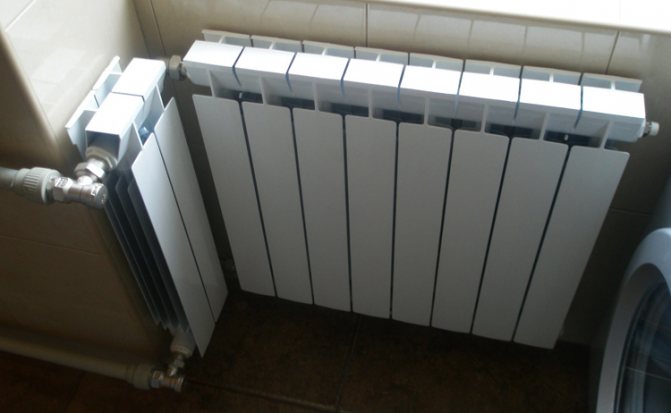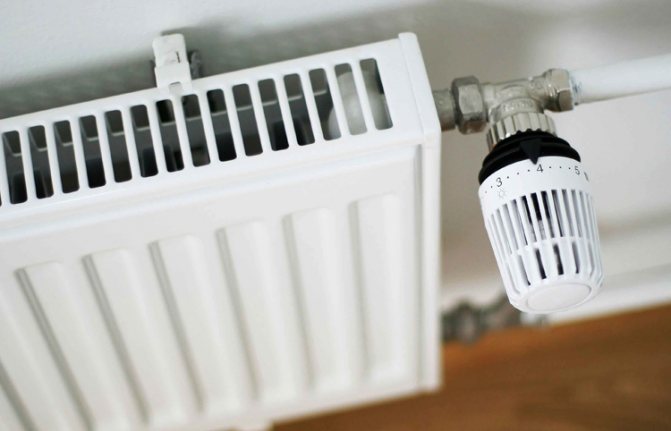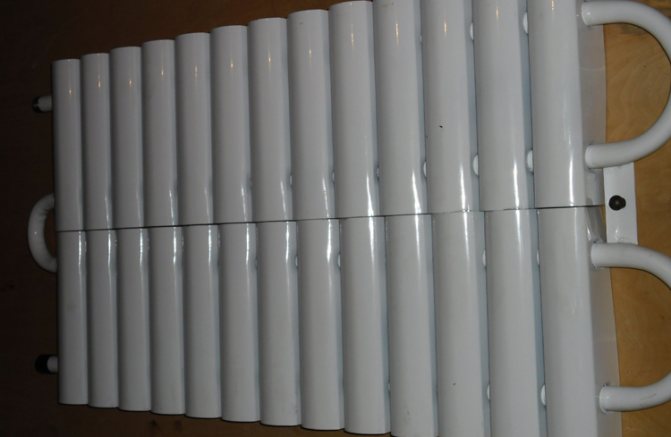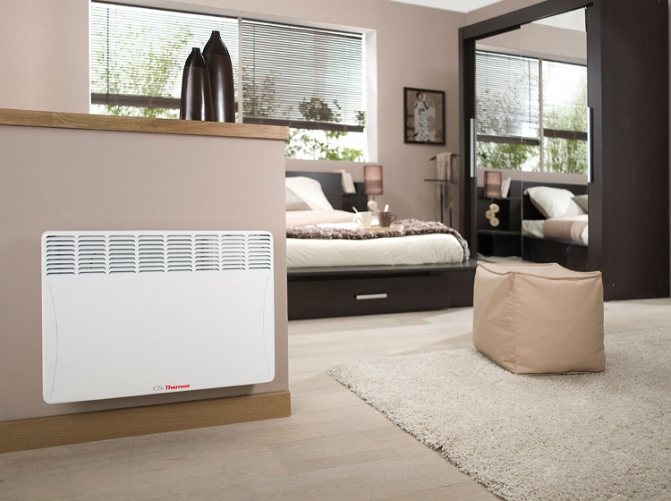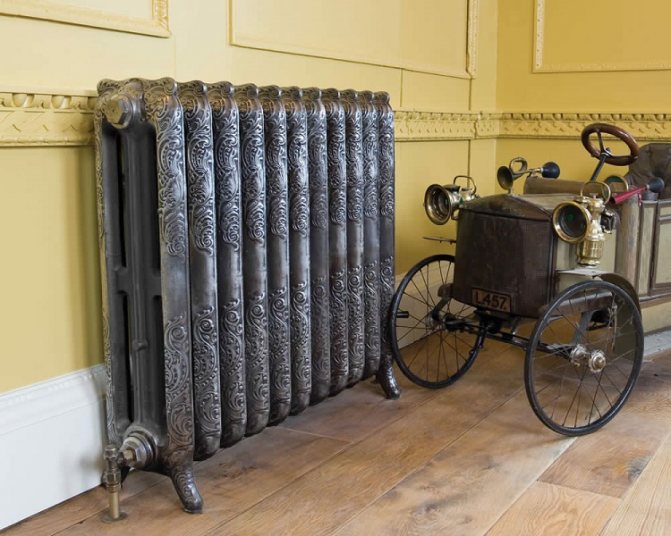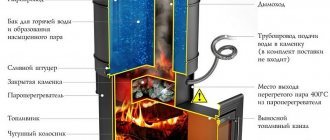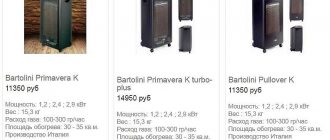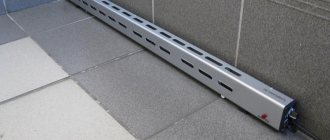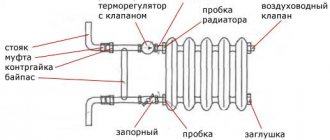What distinguishes a convector from a radiator
The described devices are a type of heating devices. They can work independently or as elements of a heat supply system. The main difference between a convector and a radiator is in the design and principle of operation of the devices.
Radiator
It is a unit with a sectional type metal casing. All free space in the sections is filled with coolant. Water, special mineral oil or antifreeze liquid are used as the heat carrier.
The principle of operation of the unit is based on the method of thermal radiation. Under the influence of a heat source, the heat carrier is heated. The heating element is such a source.
An increase in the temperature of the coolant leads to heating of the surface of the device body. A heated housing generates heat to the surrounding area. Heat radiation increases the heating level in the room.
The coolant temperature is monitored by a built-in heat sensor. Automation turns on and off the device when the set values are reached. The heating of the working fluid is controlled using a built-in thermostat.
Convector
To answer the difference between a heating convector and a radiator, consider the principle of operation of the device.
The operation of the device is based on convection of air masses in a room. It is an installation with a panel-type metal casing. A heating element with a thermostat is located in the housing. The thermostat is used to regulate the heating temperature.
The housing has an open space at the bottom. Through it, a stream of cold air enters the housing. The heating element heats the cold air to a predetermined level. Heated air streams rush upward.
To accelerate and direct the warm air flow, special louvers in the device body are used.
Warm air masses displace cold air in the upper part of the room. The flow of cold air goes down. At the bottom, it enters the device housing again. The working cycle of air movement is repeated.
The set room temperature level is monitored by a heat sensor. Sensor triggering leads to automatic switching on and off of the device. The set parameters are adjusted using a mechanical or electronic control unit.

Pros and cons of radiators
Standard radiators consist of several sections, in their case there is a special heat source, due to which they are able to heat the air in the room. As one of the most common options, it is worth noting standard batteries, which are found in almost every home. An additional mobile radiator or convector can successfully replace them in many cases. Since these batteries operate with hot water and depend on the general heating system, they can be intermittent. For this reason, it is quite often necessary to purchase compact oil radiators as a source of additional heating in the house. They work with special electric heaters coated with mineral oil. During operation, the electrical parts heat up the oil, with the help of which the housing becomes hot and transfers heat into the space of the room. It is worth noting a number of undoubted advantages of such devices, their list includes:
- the ability to effectively heat the air in the room;
- acceptable cost and economy;
- the possibility of soft heating, since such radiators do not dry out the air during operation due to their design and the presence of special parts;
- ultimate reliability, durability, compact size and the ability to transfer the device from one room to another.


Each radiator, depending on the model and configuration, may differ in a number of disadvantages. Usually, their list includes a very high degree of heating of the device body, which cannot be touched during operation, since it is capable of heating up to 90 degrees.
The large weight of the unit, which is usually at least 10 kg, makes transportation very difficult: the thing is that the case of devices of this kind is usually made of metal and has a very large weight. If the case is inadvertently damaged, oil may leak, in which case the radiator will need urgent repair.
During use, it is necessary to strictly follow the operating rules in order to avoid burns and various unpleasant situations.
Advantages and disadvantages of convectors
The answer to the question of which is better - a convector or a radiator, allows you to get an analysis of the advantages and disadvantages of both types of systems.
The advantages of the devices include:
- Autonomous mode of operation.
- Low level of heating of the case surface (up to +70 ᵒС).
- Fast heating of cold air (1-1.5 minutes).
- Lack of coolant and pipelines.
- Possibility of combining devices into one network.
- Convenience of controlling one or several devices at the same time.
- Simplicity of construction and installation of the installation.
- Quiet and environmentally friendly.
- Explosion -, fire safety.
- Modern design.
The disadvantages are:
- A large amount of electricity used.
- The high cost of multifunctional installations.
- Low level of electrical safety.


Operation of devices
The difference in operation is also quite significant for such devices as a convector and a radiator. It will be useful to know the advantages and disadvantages before buying. In terms of electricity consumption, the convector is undoubtedly more profitable. It consumes 25% less energy than a radiator. This is due to the difference in the heating rate of the air.


During operation, the convector also wins in terms of mobility. It is lighter than the radiator, so it will be easier to move the device. The possibility of installing the convector on the wall allows you to avoid cluttering the space. This factor makes cleaning the apartment easier. An oil heater weighs between 18 and 25 kg, so it is rather difficult to move it (especially when hot). Even with castors, this process is problematic.
Advantages and disadvantages of radiators
The advantages of these devices include:
- Ease of controls.
- Convenience of movement.
- Affordable price.
- Simplicity of care and maintenance.
The disadvantages are:
- High level of body surface heating (up to +100 100С… + 120 ᵒС).
- High fire hazard.
- Great weight.
The listed pros and cons will help buyers determine what is best to use in an apartment - a convector or a radiator.


Technical characteristics and cost of heaters
The main characteristics and cost of heating radiators and convectors are shown in the table.
| Model name | Specifications | The country of manufacture | Cost, rub. |
| Radiators | |||
| Ballu BOH / CL-05WRN 1000 | The number of modes - 3. The number of sections - 5. Power, kW - 1.0. Heating area, m2 - 15. Control - mechanical. There is a thermostat. Weight, kg - 4.2. | Russia | 1 990 |
| Vitek VT-1709 W | The number of modes - 3. The number of sections - 9. Power, kW - 2.0. Heating area, m2 - 20. Control - mechanical. There is a thermostat. Weight, kg - 6.5. Functions: * shutdown when overturning; * overheat protection. | China | 3 990 |
| De Longhi TRRS0920C | The number of modes - 3. The number of sections - 9. Power, kW - 2.0.Heating area, m2 - up to 24. Control - mechanical. There is a thermostat. Weight, kg - 12. Functions: * frost protection. | China | 8 990 |
| Convectors | |||
| Ballu BEC / EM-1000 | The number of modes - 2. Power, kW - 1.0. Heating area, m2 - up to 15. Control - mechanical. There is a thermostat. Weight, kg - 3.0. Functions: * shutdown when overturning; * overheat protection. | Russia | 1 990 |
| Electrolux ECH / B-1500 E | The number of modes - 5. Power, kW - 1.5. Heating area, m2 - up to 20. Control - electronic. There is a thermostat. Weight, kg - 3.0. Functions: * shutdown when overheating; * frost protection. | China | 5 790 |
| Bork R704 | The number of modes - 3. Power, kW - 1.0. Heating area, m2 - up to 20. Control - electronic. There is a thermostat. Weight, kg - 5.6. Functions: * touch screen; * automatic maintaining heating; * shutdown when overturning; * protection from children; * overheat protection; * remote control. | China | 12 890 |
Comparison of the tabular data shows a slight excess in the cost of convectors. This is due to the increase in the degree of their automation and the presence of a large number of useful functions.
The final assessment, which is better - convectors or heating radiators, will help to compare the features of the operation and maintenance of devices.
Durability
Convector and radiator are characterized by different service life. The differences in this indicator are significant. Of course, a lot depends on the manufacturer and the build quality of the device. Taking into account the general principle of operation of such equipment, experts advise purchasing convectors. Their service life reaches a record 15 years.
Oil radiators cannot boast of such indicators. The substance inside the sections corrodes their material. Therefore, such devices rarely work for more than 7 years. And most of the models do not operate even longer than five. First, a microcrack appears in the housing. It is not visible to the naked eye. Over time, it increases and the oil begins to flow out. Such heaters cannot be repaired. Therefore, it is better to give preference to convection devices.
Features of the operation of radiators and convectors
Each of the considered types of installations has individual characteristics. Comfortable work with devices is determined by the number of useful functions.
Radiators
These heaters provide quick heating of rooms. An automatic regulator ensures a stable room temperature. The heat transfer fluids used have high thermal conductivity.
For ease of movement, many devices are equipped with casters. Transfer to another location is done using the built-in handle. For protection against overturning, side stops are used. For drying small items, a wall-mounted heated towel rail is used. On the front side of the control unit there is a place for the power cable.
Convectors
The devices have a convenient control system. The heart of this system is a mechanical or electronic thermostat.
The mechanical thermostat is easy to use. Manual units are of low cost. The main disadvantages are noisy operation and low temperature setting accuracy. The adjustment step of the mechanical thermostat does not exceed 5 ° C.
An electronic thermostat allows you to set the temperature with an accuracy of 0.1 ᵒС. Such devices have several operating modes. It is possible to change the settings and program the operating modes. Quiet operation allows the use of electrical appliances in bedrooms.
A large number of useful functions in the question of what is better for an apartment - a convector or a radiator, make an advantage in favor of devices of the first type. These devices have the following convenient features:
- frost protection;
- keypad lock;
- economy mode;
- remote control;
- Internet connection.
The function "Frost protection" allows you to maintain the temperature inside the room at the level of +5 ᵒС… + 7 С in autonomous mode. It is used in country houses and houses without central heating.
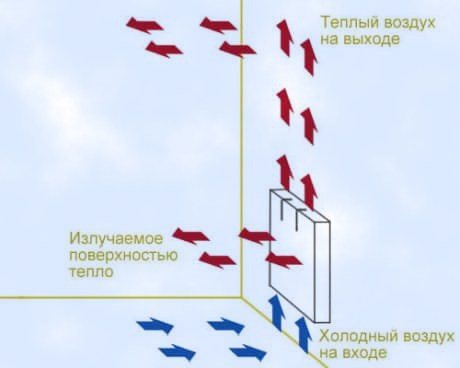

The cost
Having considered how the convector differs from the radiator, it is worth saying a few words about the cost of these devices. An oil heater is much cheaper when buying. It is for this reason that they are still actively bought by the owners of houses, apartments and offices. But it is worth noting that radiators will consume more electricity during operation. Therefore, the savings in the purchase of equipment are questionable. Indeed, in the process of heating, you will have to pay significant sums monthly to pay for electricity.
The convector will pay off pretty quickly. In addition, this equipment option wins on almost all counts. Its durability, comfort in use and safety indicate the advisability of purchasing this particular heater. Such a purchase will be beneficial in all respects.
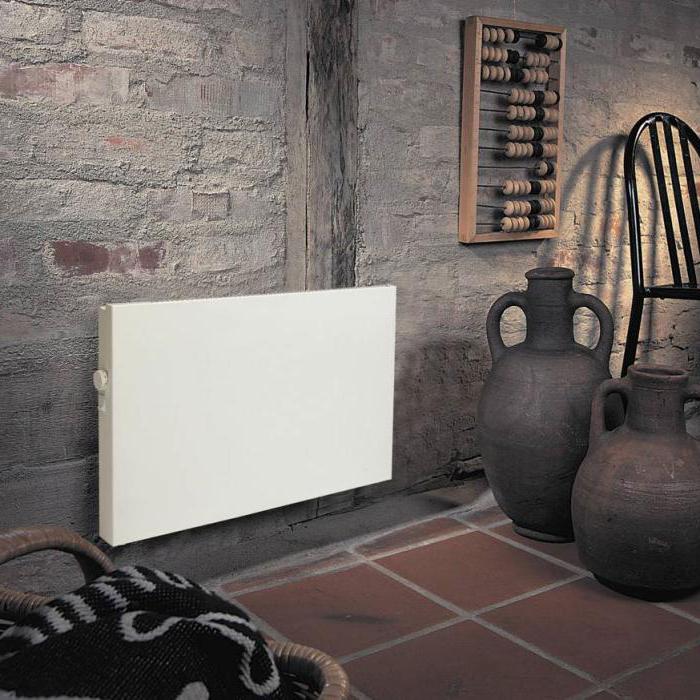

Convectors in all rooms can be connected into a single system. This will be autonomous heating at a relatively low cost.
Having considered how the convector differs from the radiator, you can make the right choice when buying. The oil heater has a low cost. But during operation, the convector turns out to be more profitable in all respects. This is a safe equipment that creates high-quality heating with minimal energy consumption.
Safety first
The compared types of devices relate to high-risk heating devices. The devices are equipped with built-in overheating protection. When the maximum temperature is reached, the device switches off automatically.
Electrical devices have an increased risk of electric shock. To prevent injury, it is necessary to strictly comply with the requirements of fire and electrical safety.
Some models are used in rooms with high humidity. To protect against damage, the devices are highly sealed.
Security
The difference between a convector and a radiator is also in the level of safety. This is due to the heating rate of each device. The oil, heated to the required temperature, makes the surface of the radiator very hot. If you accidentally touch it, you can get burned. Therefore, such a device should in no case be acquired by a family with a small child. Also, you cannot leave the oil cooler unattended. In the event of an unforeseen situation, this device may cause a fire.
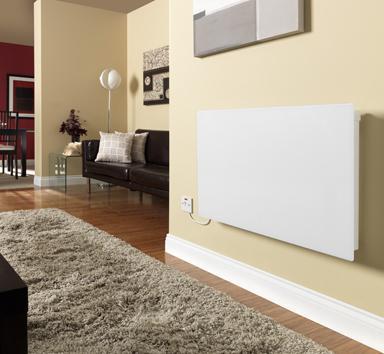

The convector is safe to use. Its body heats up to a maximum of 60 ° C. If you touch it, there will be no burn on the skin. Also, this device can be left unattended while running. If foreign objects accidentally hit its surface, a fire will not happen.
